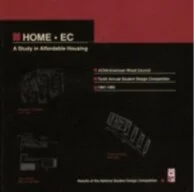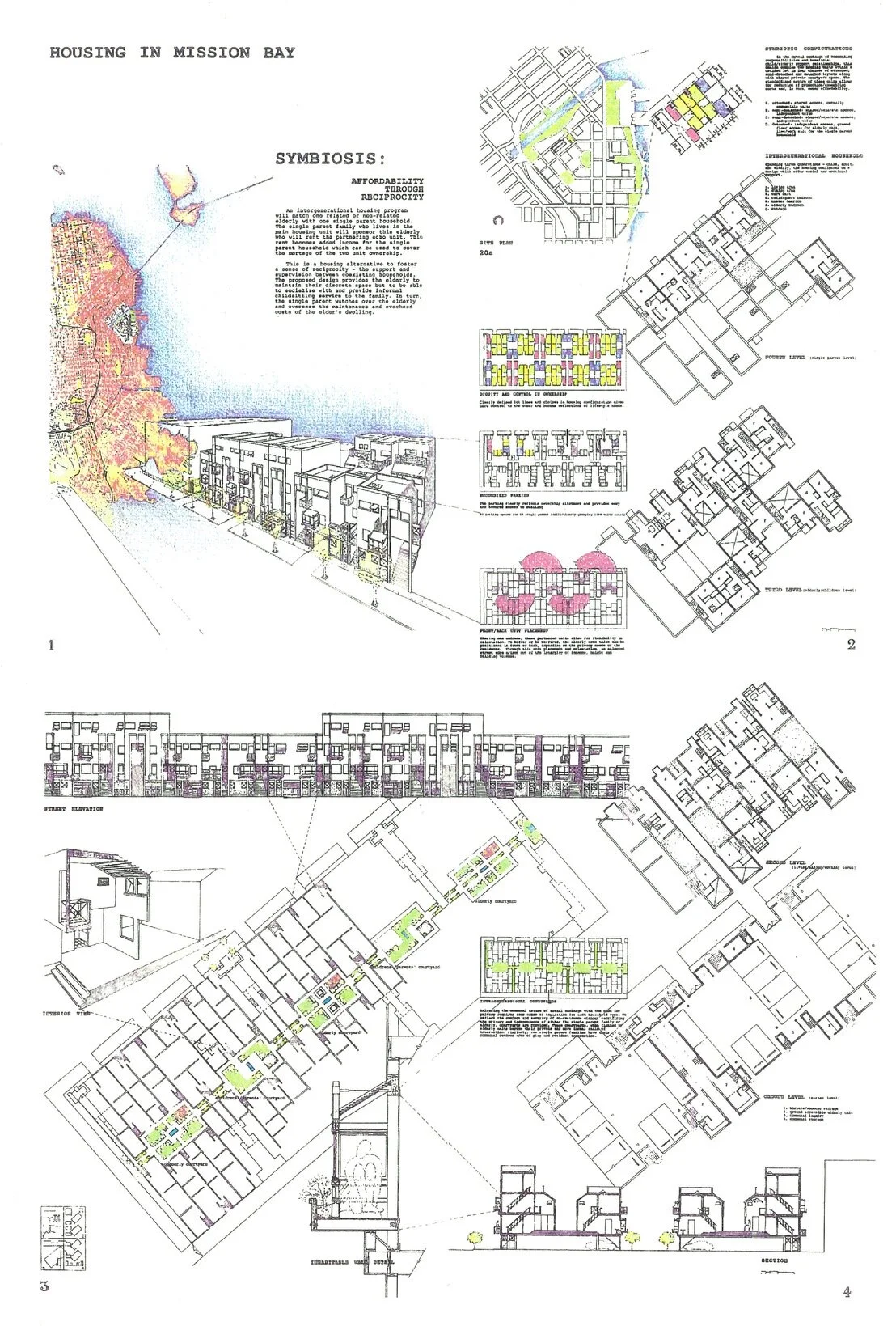Symbiosis: Affordability through Reciprocity, A Study in Affordable Housing
PUBLISHED IN: HOME EC: STUDY IN AFFORDABLE HOUSING, ASSOCIATIONS OF COLLEGIATE SCHOOLS OF ARCHITECTURE (ACSA), 1992
NATIONAL DESIGN COMPETITION WINNER, AMERICAN WOOD COUNCIL, 1992
AFFORDABLE HOUSING EXHIBITION OF WINNERS, NATIONAL AIA CONVENTION, CHICAGO, 1992
Statement of Intent
Aggregate housing is a distinct urban building type born out of the architectural and social construction of the city. It not only provides shelter to city dwellers; it ensures the livability and prosperity of these cities. The emphasis of my investigation lies in the recognition of this urban form and urban obligation as well as in the recognition of new needs and new types of aggregate housing in the city. The current options for housing are negligent in addressing the social ambiguities and pluralities of the 20th century. Through poorly directed market-driven decisions, the available housing stock lacks variety and affordability. Rather than focusing on either alone, I intend to explore both an economically viable and socially significant urban form of housing—to determine a symbiotic relationship in which housing mirrors the city and becomes a product of architectural and social construction. By establishing a mutually beneficial relationship to its urban context, I offer a valid solution to livable housing in the city.
read more
The housing unit becomes a basic building block of the physical construction of the city. When placed in dense configurations, it defines streets and public spaces of the city. It becomes a space for human assembly where its residents determine the socio-economic structure of the city. People from all stages of life and of all lifestyles live together in the city. Housing must interweave these disparate household types into a piece of the larger urban fabric.
In exploring the design of housing within a social-economic context, I address changing demographics and varying social interpretations of household composition. There is a need for a housing alternative which fosters reciprocal support and supervision between coexisting households. My architectural response intends to reflect the comfort and security of co-residence without sacrificing the privacy and autonomy of these disparate households.



